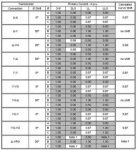D!NNy
Senior Member
- Location
- San Luis Obispo
I am using a 12kv/480v 500kva transformer, I left all the variables constant and changing the transformer configuration from Solid grounded to Delta on the secondary and kept primary side to Delta in both the cases incident energy is changing from 25 to 30. can anyone help me what is the relation between the transformer configuration and IE. where the fault current and fault clearing times are remained to be same......
Thanks in Advance
Thanks in Advance

